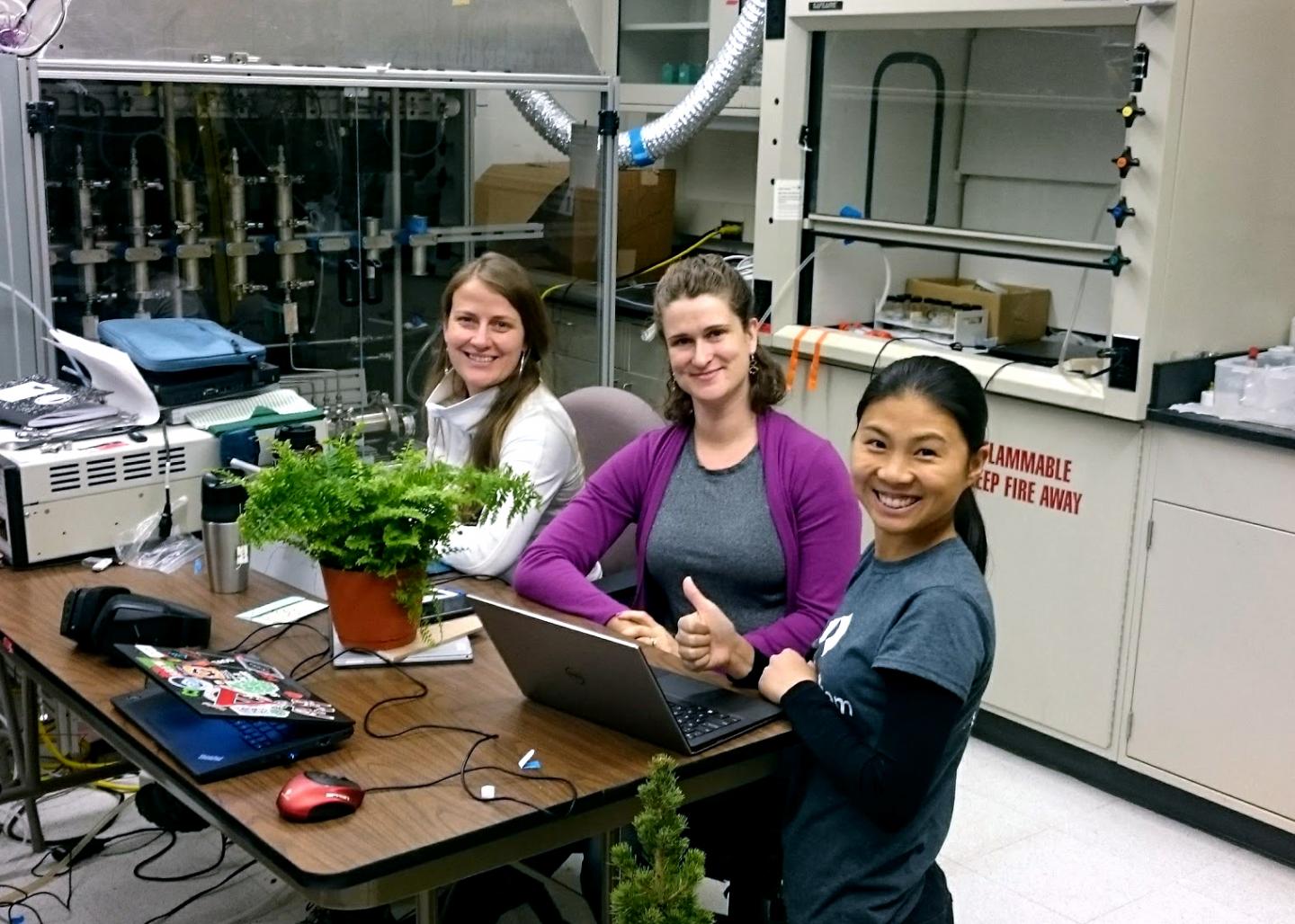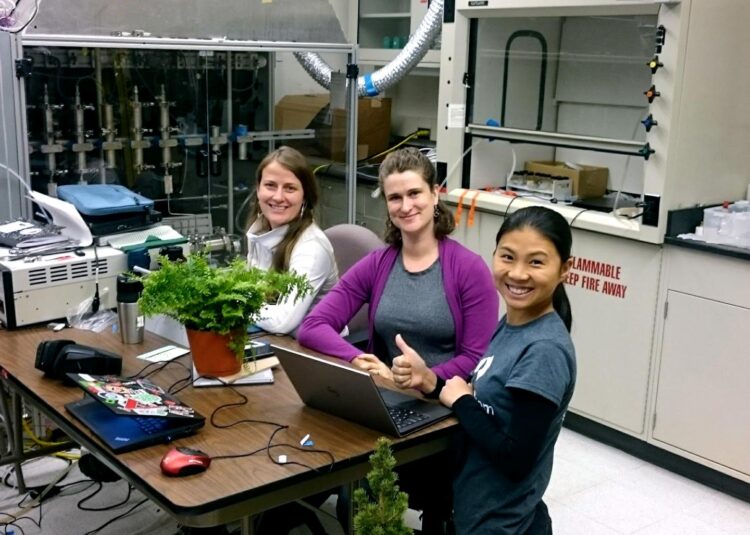
Credit: Trevor VandenBoer
Cleaning surfaces with hydrogen peroxide-based disinfectants has the potential to pollute the air and pose a health risk, according to research led by University of Saskatchewan (USask).
The research team found that mopping a floor with a commercially available hydrogen peroxide-based disinfectant raised the level of airborne hydrogen peroxide to more than 600 parts per billion–about 60 per cent of the maximum level permitted for exposure over eight hours, and 600 times the level naturally occurring in the air. The results were just published in the journal Environmental Science & Technology.
“When you’re washing surfaces, you are also changing the air you are breathing,” said USask chemistry researcher Tara Kahan, senior author of the study and Canada Research Chair in Environmental Analytical Chemistry. “Poor indoor air quality is associated with respiratory issues such as asthma.”
Too much exposure to hydrogen peroxide could lead to respiratory, skin, and eye irritation, according to the U.S. Centres for Disease Control.
The COVID-19 pandemic has led to increased cleaning and demand for all types of cleaning products, including bleach alternatives that contain hydrogen peroxide.
“At the beginning of the pandemic, we couldn’t do research on this topic because hydrogen peroxide solutions were out of stock,” Kahan said.
Kahan’s team, which also included researchers from Syracuse University, York University (Toronto), and University of York (England), sprayed the vinyl floor in a simulated room environment with 0.88 per cent hydrogen peroxide disinfectant and wiped it dry with paper towel either immediately or after letting it soak in for an hour. The team then tested the air at human head height.
“The real risk is for people who get repeatedly exposed, such as janitors and house cleaners,” Kahan said. “We washed the floor and collected measurements at face height–the concentrations will be even stronger at the floor or at the level of a countertop.”
Kahan said that the impact on children and pets–those physically closer to the disinfected surfaces–is not yet known.
More than 10 per cent of disinfectants approved by Health Canada that are deemed likely to be effective against SARS-CoV-2 use hydrogen peroxide as the active ingredient. A total of 168 disinfecting products containing hydrogen peroxide as the active ingredient are approved or marketed in Canada.
There are a few ways to reduce risks while disinfecting your home, Kahan says:
- Consider using soap and water instead of a disinfectant–soap and water are known to kill the virus that causes COVID-19.
- Consider opening a window, turning on a range hood, or using your central air system–ventilation can dramatically reduce levels of pollutants circulating in the air and is one of the most effective methods of removing particles that can carry the virus.
- Opt for hydrogen peroxide-based disinfectants over bleach, as Kahan notes “Hydrogen peroxide is still much less potentially harmful than bleach.”
Funded by the Canada Research Chairs program and the Alfred P. Sloan Foundation, Kahan’s team–mostly women in a discipline which tends to be male-dominated–is currently repeating the experiment in a house and apartment in Saskatoon to determine whether the high numbers occur in a real world environment and to find practical ways to mitigate exposure risks.
###
Media Contact
Victoria Dinh
[email protected]
Original Source
https:/
Related Journal Article
http://dx.






